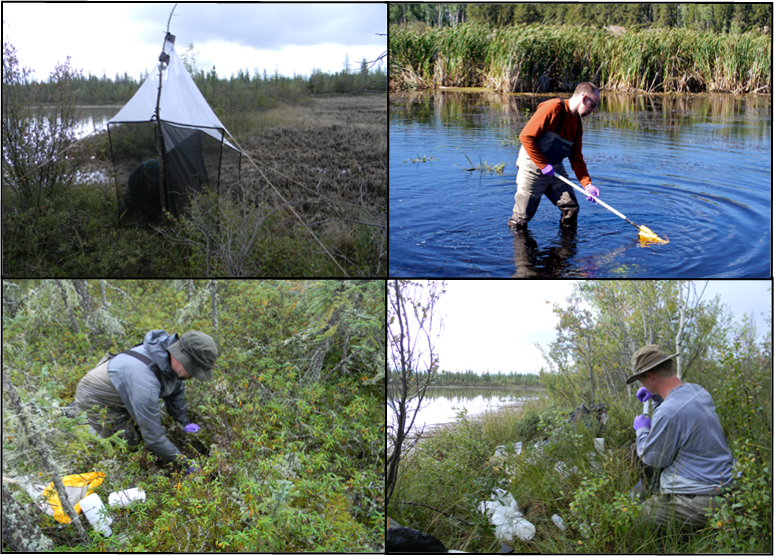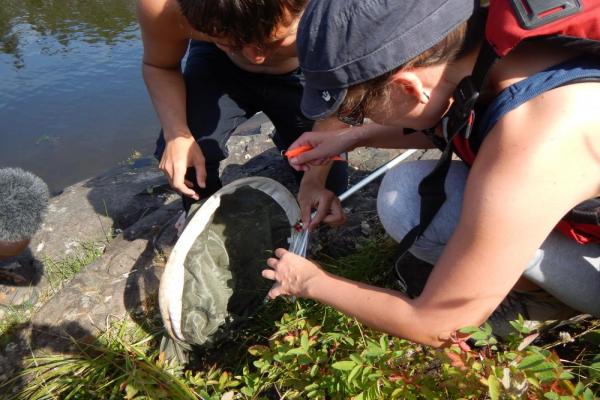Main Project Contact:
Sarah Rosolen
Project Start Date:
2013
Project End Date:
Ongoing
Project Name:
Biomonitoring 2.0: Biodiversity Assessments in Slave River Tributaries
ARI Team:
Sarah Rosolen
Overview:
Over the past four years, Environment Canada scientists have been working closely with scientists from the University of Guelph to develop a new approach to study how changes in the pattern of living organisms in the biosphere can be used to diagnose causes of environmental change. DNA from environmental samples (soil, water, benthos and air) is amplified and sequenced, and the resulting sequences compared against a global library of pre-identified material. This permits rapid and accurate analysis of all taxa present within a sample, across all major groups of life (bacteria, fungi, protists, plants, invertebrates, vertebrates).
Aurora Research Institute has partnered in this project to help support technology transfer to local communities. We feel that this research has great relevance for remote communities in Canada's north, where there is a need to build capacity in environmental monitoring by local people. Delivering DNA-based biomonitoring tools to local communities is empowering, not only in that it improves the ability of citizen scientists to monitor their own backyard, but also in that it can provide a window into the local environment that is much more broadly-based in terms of the types of organisms being monitored. We will be supporting sampling in the communities to develop baseline data, and work on capacity building within communities to support development of long-term community monitoring programs.

Objectives:
The primary objective is to assess the biodiversity in the Slave and Dog Rivers, NWT, using a variety of collection methods, to support the establishment of baseline biomonitoring conditions, and to explore the use of DNA-based identification of animals, plants and microorganisms. Another objective is to test out a new technique (DNA sampling) in the field. Lastly, this research will be to study local community perceptions of this new technology. An MSc student is being brought on to the project to solicit input from community organizations and agencies to determine how it may be used to complement traditional knowledge and empower volunteer monitoring networks to deliver world-class science to monitor their local ecosystems.
Location:
Slave River Tributaries, South Slave Region, NWT
Methods:
Standard field collection methods will be employed. Environmental samples within the river channel will be obtained by sweeping a hand-net in a standard fashion through vegetation, and disturbing the river bottom and from the river bank by the careful placing of small net traps for flying insects, and by sweep net. Soil samples will also be obtained, using a hand-corer. Collected samples will be processed in two ways: either by sorting samples directly in the field or by transport to the laboratory at the University of New Brunswick for sorting under a microscope. Once sorted, samples will be sent for DNA analysis at the University of Guelph, where DNA will be extracted and sequenced. The resulting DNA information will be processed, and the results made available through GenBank, a public database. The resulting information on the types of animals and plants found in the area will be compiled and made available to local environmental monitoring groups in Smith's Landing and Salt River.

Schedule:
Field work will be conducted between June 19, 2013 to September 30, 2013 and July 7, 2014 to August 31, 2014. Analysis will be conducted after each field season.
External Partners:
University of New Brunswick
Environment Canada
Canada Rivers Institute
For more information, contact Dr. Donald Baird - Research Scientist, Environment Canada & Research Professor, Canadian Rivers Institute (djbaird@unb.ca) or Sarah Rosolen, Manager South Slave Research Centre (srosolen@auroracollege.nt.ca).
